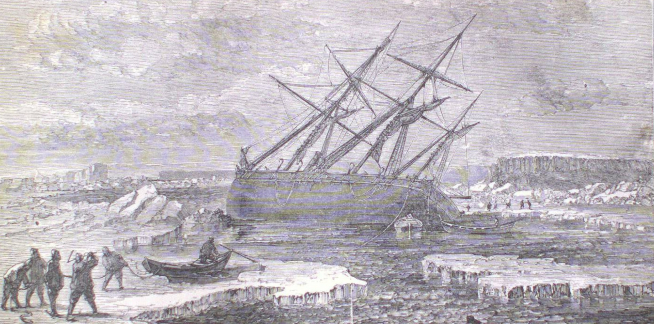Franklin Found! Clues in an Arctic Mystery

The recent discovery of one of the Franklin expedition’s lost ships has provided new evidence in a mysterious chapter in early Arctic exploration.

Sir John Franklin was a veteran of Arctic exploration, completing several successful trips between 1818 and 1827, but it is his disastrous 4th expedition that is the most famous. Franklin was appointed commander of an expedition to find the Northwest Passage in 1845, and he and his crew set off on May 19th that year. The ships were sighted in July 1845 – they were never seen again.

The British parliament pronounced the crewmen officially dead in March 1854, but the riddle of the missing ships remained.
The Admiralty sent the first search party in 1848, and offered a reward of £20,000 to anyone who was able to find and assist the lost expedition. Victorian society was entranced by the mystery, and between 1848 and 1878 more than 15 expeditions set out to find the crew, or at least, some evidence of what happened to them.
While the ships and crew were never recovered, interest in the unknown world of the North grew. Popular songs were written about Franklin’s expedition, money was raised to send new expeditions, and the travel journals of those who went North became popular reading for the British and North American public.
Many of these writings had a decidedly Romantic cast with accounts of the unimaginably harsh weather, hardships, adventures, discoveries and deaths endured by the intrepid (and heroic) explorers.


But they were also a first glimpse for many readers into an unknown world. The journals contained information about the peoples who lived in these inhospitable climates: how they dressed, what they ate, where they lived, and the tools and skills they used to survive. Many of the expeditions used these tools, and relied on the expertise of the ‘Esquimaux’ who helped them navigate the difficult territory.

The discovery of one of the Franklin expedition’s ships has provided new material for scholars and enthusiasts as they work to reveal more of the fascinating history of Arctic exploration in Canada’s North.
